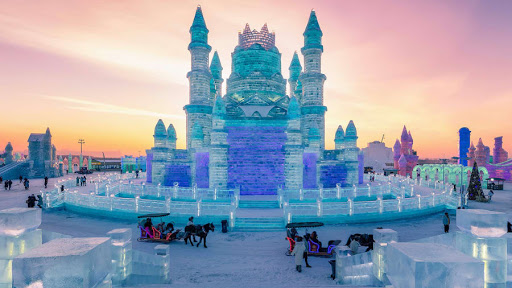TALAL BUKHAMSEEN WRITES — Every February, locals and tourists gather in Sapporo, Japan for a week of festivities celebrating the Sapporo Snow Festival. This year’s event, running from February 4th to the 11th, will mark the 70th anniversary of the festival.
For its 70th Anniversary, the Snow Festival featured over 200 sculptures. Among those most popular: one of Naomi Osaka, champion of the US and Australian Open Tennis tournaments, and a rendition of Helsinki Cathedral. The Ground Self-Defense Force built this cathedral replica to commemorate 100 years of diplomacy between Japan and Finland.
The festival was first held in 1950 at Odori Park when high school students built six snow statues that ended up attracting about fifty thousand visitors. Five years later, the Defense Force joined and made massive snow sculptures. By 1959, 2500 people were involved in the snow sculpting process. As time passed, it became an international phenomenon that even drew comparisons to the Winter Olympic Games of 1972 at Sapporo. Now there are over two million visitors each year, presumably because entry is free—and the sights are something to behold!
Naomi Osaka and Helsinki Cathedral snow sculptures
The annual snow festival is staged on three sites: Odori Park, Tsudome and Susukino. Odori Park, the main venue, is known as the birthplace of the Snow Festival. Ice sculptures there can tower up to 15 meters and spread over 25 meters. Typically, visitors indulge in food and drinks as they explore various artistic works. At the Tsudome site, which is the second largest, approximately 100 ice sculptures are featured. At the Susukino site, located in the entertainment district, a beauty contest is staged at this site, crowning the Susukino Queen of Ice.
Japan now anticipates a flood of international visitors to all three sites. Why does this matter? One, the festival is expected to boost tourism by showcasing the creative and festive aspects of Japanese culture that the rest of the world might not know; and two, it encourages relations across international borders.
The hard, cold truth of all this? Japanese culture features the tradition of sharing. Ice is no exception.
Various snow sculptures from the festival






